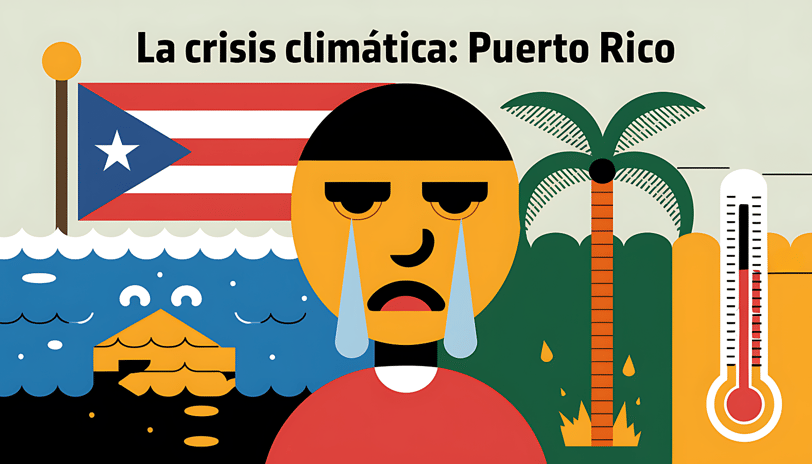Puerto Rico's Position in the Global Climate Crisis
November 2024 analysis on Puerto Rico's position in the global climate crisis. A new report warns that Puerto Rico's critical infrastructure is increasingly threatened by sea-level rise caused by climate change. By 2050, about 28 key infrastructure sites could experience damaging floods twice a year, and projections indicate that this figure could rise to 325 locations, including homes and industrial facilities, by 2100.
NOTICIAS DE HOYSALUD Y VIDACULTURA
11/7/20242 min read


Puerto Rico's Position in the Global Climate Crisis
In November, a new report highlighted the growing threat facing Puerto Rico due to climate change, particularly regarding sea-level rise and its impact on the island's critical infrastructure. This analysis leads us to explore how the global climate crisis is affecting Puerto Rico and what we can expect in the future.
Introduction
Puerto Rico, located in the Caribbean, is particularly vulnerable to the effects of climate change. The rise in sea levels, combined with more intense storms and extreme weather events, is putting the island's critical infrastructure at risk. According to a recent study, by 2050, about 28 key infrastructure sites could experience damaging floods twice a year. This figure is alarming and reflects the urgency of taking measures to mitigate these effects.
The Impact of Climate Change on Puerto Rico
Climate change is not only affecting infrastructure but also the daily lives of Puerto Rico's residents. With a significant population living in coastal areas, the rise in sea levels poses a direct threat to thousands of homes and businesses. In fact, it is estimated that around 8,000 structures in low-lying areas are at risk with just a 1.6-foot increase in sea levels, and this number could escalate to over 50,000 structures if the increase reaches 6.5 feet, resulting in losses of approximately $11.8 billion.
Projections for the Future
The projections for the future are even more ominous. By 2100, it is expected that the number of critical infrastructure sites at risk of flooding will increase dramatically, reaching a total of 325 locations, including homes and industrial facilities. This will not only affect the local economy but also put the health and safety of the population at risk.
Causes and Consequences
The rise in sea levels is mainly due to the thermal expansion of the oceans and the melting of glaciers and polar ice caps. Additionally, coastal erosion is accelerating in some areas of Puerto Rico, such as Rincón, where the coastline is retreating at a rate of up to one meter per year.
Necessary Actions
Given this situation, it is crucial that measures are taken to mitigate the effects of climate change. This includes planning for a sea-level rise of between 0.5 and 1.0 meters by 2100, as recommended by the Puerto Rico Climate Change Council. Additionally, it is essential to invest in resilient infrastructure and promote sustainable coastal management practices.
Conclusion
The climate crisis is a global challenge that requires immediate action. In the case of Puerto Rico, the rise in sea levels and its effects on critical infrastructure are becoming increasingly pressing. It is time for both leaders and the community to take action to protect the future of the island and ensure the safety and well-being of its inhabitants.
References: Study: Puerto Rico infrastructure among most affected in US by climate change Rising sea levels from climate change threatens Puerto Rico's infrastructure Puerto Rico Climate Change Council
